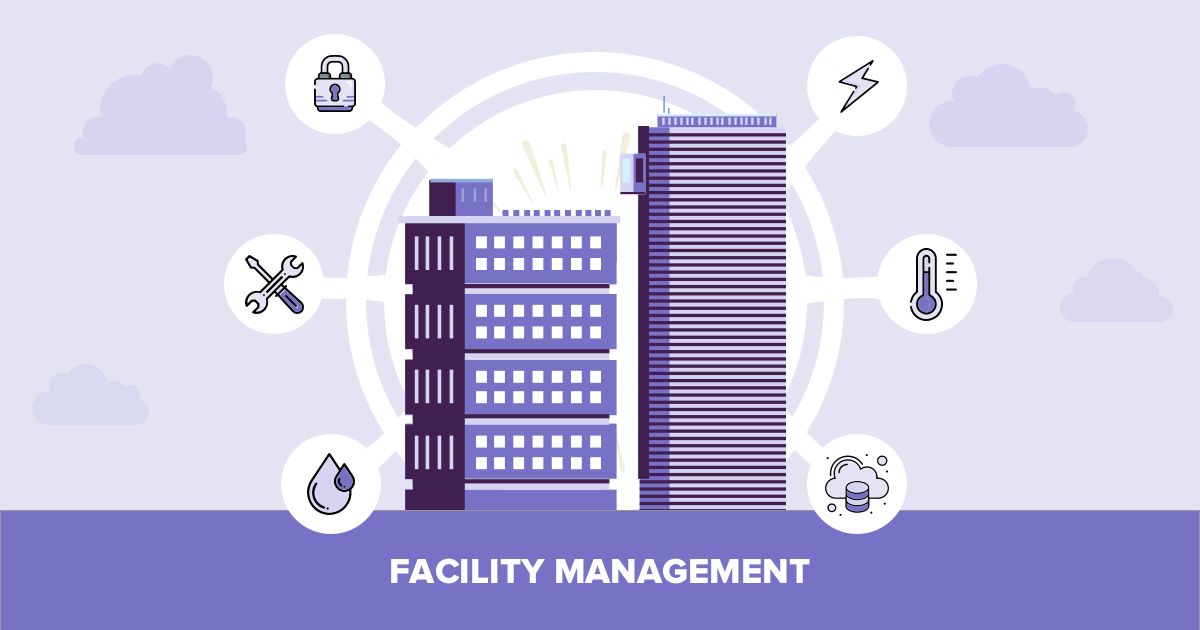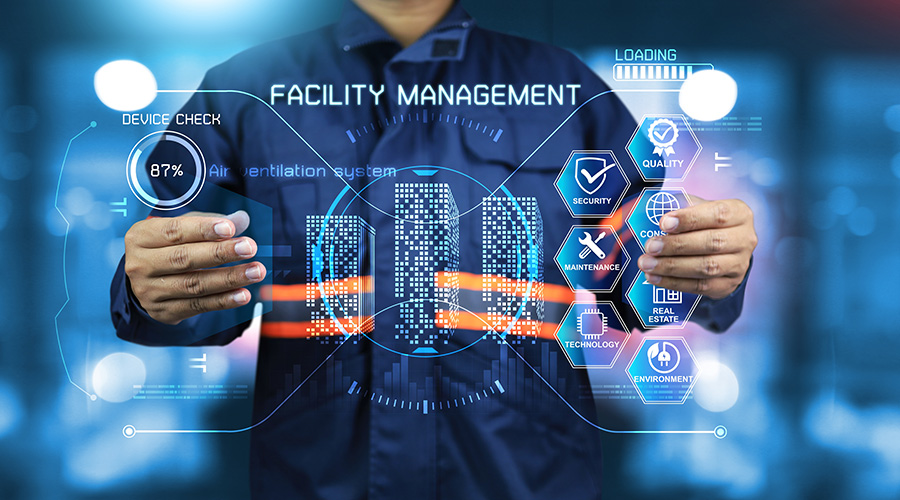The Function of Facility Management in Sustainable Workflow
Wiki Article
Trick Fads Shaping the Future of Facility Management in 2024
As we expect 2024, the landscape of facility administration is positioned for considerable transformation, driven by several vital patterns. The integration of wise building modern technologies and a change towards data-driven decision-making promise to boost operational effectiveness while focusing on sustainability in practice. The emergence of hybrid work designs is reshaping workplace settings, demanding innovative layout options that cater to developing employee requirements. Amid these adjustments, the concentrate on owner health remains to get grip, underscoring the significance of a healthy and balanced workplace. Exactly how these trends will materialize in technique continues to be a crucial question for market professionals.Smart Structure Technologies

Smart structure technologies incorporate a large range of systems, consisting of intelligent lights, heating and cooling controls, and safety systems. By integrating these systems, center managers can keep an eye on and adjust specifications in real-time, resulting in significant reductions in power waste and functional prices. Clever sensing units can spot occupancy degrees and readjust lighting and temperature accordingly, making certain that energy is just made use of when necessary.
Additionally, these technologies help with improved information collection, enabling organizations to track usage patterns and identify chances for more renovations. The application of wise structure technologies not only contributes to sustainability goals but additionally creates much healthier workplace that can boost worker productivity and complete satisfaction.
As we relocate right into 2024, the fostering of smart structure modern technologies will likely increase, showing a more comprehensive shift towards more intelligent, responsive, and sustainable facility monitoring practices.
Data-Driven Choice Making
Increasingly, organizations are leveraging data-driven decision making to improve center administration practices. By taking advantage of information analytics, center supervisors can derive workable insights that considerably enhance functional efficiency and source allowance. The assimilation of innovative innovations, such as IoT sensing units and real-time surveillance systems, makes it possible for the collection of vast quantities of information on building performance, occupancy prices, and power intake.This riches of details enables facility managers to recognize trends, forecast upkeep requirements, and proactively address problems prior to they intensify. For instance, predictive analytics can forecast equipment failures, reducing downtime and repair work costs. Additionally, data visualization devices promote far better communication amongst stakeholders, making certain that notified choices are made collaboratively.
In addition, data-driven techniques enhance tactical planning by allowing center supervisors to examine the effectiveness of current methods and make educated selections pertaining to financial investments in modern technology or framework. As organizations progressively focus on functional excellence, data-driven choice making is poised to become a cornerstone of effective facility monitoring methods in 2024 and beyond. Inevitably, the ability to leverage data successfully will equip organizations to produce much more reliable, productive, and durable facilities.
Sustainability and Environment-friendly Practices
The emphasis on data-driven decision making normally aligns with the expanding focus on sustainability and eco-friendly methods within center administration. As companies progressively focus on ecological duty, center supervisors are leveraging analytics to optimize source use, decrease waste, and lessen carbon impacts. This calculated strategy allows the integration of energy-efficient systems, such as LED illumination, smart heating and cooling controls, and Recommended Reading renewable resource sources into center procedures.In addition, the application of lasting techniques prolongs beyond power intake. Center supervisors are advertising and adopting environmentally friendly materials recycling campaigns to create a round economic climate within their facilities. This not only enhances the environmental profile of the organization however also fosters a culture of sustainability amongst workers.
Conformity with environmental laws is an additional important aspect driving the adoption of green methods. By utilizing information analytics, center supervisors can check conformity metrics and identify locations for enhancement, guaranteeing adherence to worldwide and neighborhood sustainability criteria.
Hybrid Job Versions
A significant shift in the direction of crossbreed work versions is reshaping the landscape of facility monitoring in 2024. This paradigm integrates remote and in-office job, requiring a reevaluation of space usage, resource allocation, and employee engagement methods. Organizations are increasingly acknowledging the value of versatile offices that accommodate varied needs and choices.Center supervisors need to adjust by applying versatile workplace designs that sustain collaborative efforts while offering areas for focused job. This includes the assimilation of technology to promote smooth interaction and collaboration amongst in-office and remote employees. Smart building services, outfitted with analytics and sensing units, enable real-time surveillance of space usage, allowing organizations to maximize their settings efficiently.
Moreover, hybrid work versions highlight the demand for reliable facility management that prioritizes worker experience. In significance, the hybrid job model is revolutionizing center management, urging an aggressive approach to satisfy the evolving demands of the labor force.
Improved Resident Health
As companies embrace hybrid work versions, an enhanced focus on passenger wellness is coming to be important to center management strategies. Facility Management. This change identifies that a healthy and completely satisfied labor force directly affects productivity and retention rates. Facility supervisors are now focusing on environments that promote physical and psychological wellness, integrating elements such as all-natural lighting, biophilic design, and available wellness sources

Innovation plays a vital duty in this evolution. Smart building systems can keep an eye on ecological factors and change setups in real-time, making certain ideal comfort degrees - Facility Management. Additionally, comments devices, such as occupancy sensing units and worker surveys, permit facility managers to consistently refine wellness initiatives original site based on passenger needs.

Conclusion
In 2024, the future of center management will certainly be dramatically affected by the combination of wise structure innovations and data-driven decision-making, promoting enhanced functional efficiency. These trends collectively emphasize the advancing important source landscape of center administration in response to modern difficulties and opportunities.Center supervisors are promoting and embracing green materials reusing initiatives to create a round economic climate within their facilities.A substantial change towards crossbreed work versions is reshaping the landscape of center monitoring in 2024.Moreover, crossbreed job versions stress the need for effective facility management that prioritizes worker experience.As companies embrace hybrid work models, an increased emphasis on occupant wellness is coming to be important to facility administration methods.In 2024, the future of facility administration will be considerably influenced by the integration of wise building technologies and data-driven decision-making, cultivating enhanced functional effectiveness.
Report this wiki page